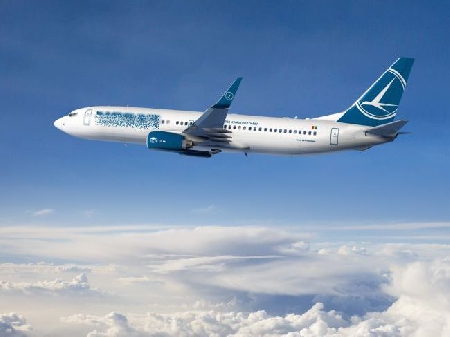The Beginnings of Romanian Civil Aviation
Traveling by plane is nowadays something common and handy just as traveling by train or by bus once was. Being initially a piece of military technology and a means of transportation for the elites, planes have become a common means of transportation for a

Steliu Lambru, 09.01.2013, 16:54
Civil aviation has its own history that goes back in time some 100 years. During WWI aviation was something new and the efficiency of aircrafts was an incentive for its development. In the wake of WWI people discovered the benefits of civil aviation namely freight transportation, services and people transportation.
Romania was among the pioneers that developed civil aviation in the 3rd decade of the 20th century, concurrently with military aviation. Romania’s representatives participated in the drafting of international documents regulating civil flights. Jurist Radu Boros studied air law in Italy, took a PhD degree in Germany and also studied international law in France. He became a legal counselor with the Air Ministry in 1937 as expert jurist at the Civil Aviation Directorate, in the Agreements, Treaties, Legislation and Regulations Department. In 1995 when he was interviewed by the Oral History Center of the Romanian Radio Broadcasting Corporation, Radu Boros also talked about Romania’s contribution to the adoption of international legislation in the civil aviation field.
Radu Boros: “In 1919 at the end of the war, a convention was concluded on the occasion of the Paris Peace Treaty. It was the IANC Convention, the International Air Navigation Convention. At that moment the principle of air navigation freedom did not exist. The only existing theory was that of state sovereignty over the air space. To be able to put in place an airline one had to conclude a special agreement with each state for the concession of these civil transport lines. The 1919 Paris Convention was meant to regulate this absolute right of sovereignty over the air space. And it set certain rules among which some basic rules for aircraft personnel qualification and international rules for airport signaling for aircraft to identify the runway and rules included in an international code for weather or navigation information”.
During the Versailles negotiations foreign minister Nicolae Titulescu had an idea, which he shared with the French politicians, to set up a civil air transportation company called the French-Romanian Air Navigation Company, a French-Romanian joint venture, that was officially set up in 1920. Next Radu Boros will briefly characterize the activity of this company.
Radu Boros: “It was the first long-range air transportation company in Europe after WWI. But that was a political airline. An airline established as part of the Little Entente. It was a political airline, an airline for military staff through which France wanted to make its presence felt in the countries of the Little Entente. That is why the airline had a strange route. It started in Bucharest and passed through Belgrade, Prague, Strasbourg and Paris. Of course Romania, Czechoslovakia and Yugoslavia subsidized that airline. Under the agreement they were supposed to train one or two pilots.”
After 1942, the British De Havilland D.H. 9 bombers were turned into passenger planes at the Aeronautical Arsenal in Cotroceni, and a year later the first domestic flight between Bucharest and Galati was established. The same year marked the closing down of the French-Romanian Airline Company, which was replaced by the International Airline Company, after the Air France model. In the 1930’s, the Romanian civil aviation continued to develop. Radu Boros has more:
Radu Boros: “When I took up civil aviation, Romania was operating only two international flights, to Prague and Belgrade, respectively. A third flight, on the route Bucharest-Warsaw was soon opened. But these routes were very difficult to establish. No one can imagine just how difficult it really was. First of all, the political issue of getting the permit to cross the airspace of another country had to be solved. Then, setting a precise route and deciding on what cities to connect were also very important. Fuelling was another issue, as kerosene was very expensive, just like airport fees, technical assistance and maintenance fees. Finally, transferring to Romania the money for the tickets sold abroad was also a difficult issue at that time.“
The promising dawns of Romanian civil aviation were shattered by the start of WWII, when civil pilots became military pilots. It was only after 1945 that a new chapter of the Romanian civil aviation began.






























